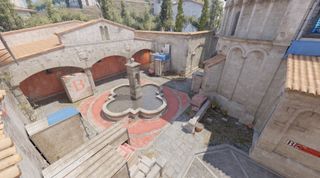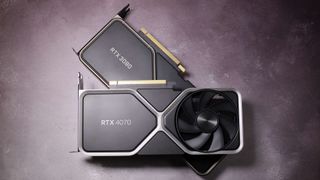AMD yeets its latest GPU driver in response to Anti-Lag+ causing bans in Counter-Strike 2
Well, that's one way to solve the problem, I guess.

As reported a few days ago, Counter-Strike 2 players using Radeon Anti-Lag+ technology in the latest GPU drivers were finding that it didn't help matters at all. In fact, it resulted in accounts being banned as Valve's anti-cheat system didn't like the latency reduction system. AMD's response to the whole problem? Yank the drivers off the download page.
Before you think I'm having a go at AMD here, this is absolutely the correct thing to do. Not weeks of radio silence, promising a fix is coming soon, or blaming somebody else for the issue. By stopping anyone from downloading the problematic drivers, AMD is properly taking responsibility for it all.
So why has this happened? AMD's Anti-Lag+ system works on a per-game basis and basically injects itself into a specified game's code. It streamlines the synchronisation of frames between the CPU and GPU, resulting in a lowering of the overall latency. In turn, this makes the game feel a tad more responsive, so for competitive shooters like Counter-Strike 2 the benefits are obvious.
However, it would seem that VAC (Valve Anti-Cheat) doesn't like another piece of software poking about with the insides of the game and automatically determines this is an attempt to cheat. Hence the account bans.
Anti-Lag+ was added for Counter-Strike 2 in the 23.20.17.01 drivers and the download for these has now been disabled. AMD now just points you to the slightly older 23.20.11.04 set instead, if you go hunting for the latest drivers.
A fix will come eventually, of course, after Valve and AMD have worked together to prevent VAC from getting all antsy with Anti-Lag+ but what about those players who have already been banned? According to the Counter-Strike Twitter account, '[o]nce AMD ships an update we can do the work of identifying affected users and reversing their ban.'

Best CPU for gaming: The top chips from Intel and AMD.
Best gaming motherboard: The right boards.
Best graphics card: Your perfect pixel-pusher awaits.
Best SSD for gaming: Get into the game ahead of the rest.
So all is not lost for the CS2 fans sporting a Radeon graphics card who've been hit with the ban hammer, just for activating a simple feature.
The biggest gaming news, reviews and hardware deals
Keep up to date with the most important stories and the best deals, as picked by the PC Gamer team.
One thing is puzzling me, though. Did AMD actually work with Valve in the first place to develop Anti-Lag+ for Counter-Strike 2? I would have assumed they did because it seems like it's an ideal marketing promotion for the technology. After all, Nvidia did the same for its Reflex system, which also does a spot of code injection, but as far as I can tell using that hasn't resulted in any account bans.
It's easy to point fingers, blame developers, and bark at the moon for problems with GPU drivers, but I can't help but feel that maybe, just maybe, AMD should have taken a little more care with the overall implementation of Anti-Lag+.

Nick, gaming, and computers all first met in 1981, with the love affair starting on a Sinclair ZX81 in kit form and a book on ZX Basic. He ended up becoming a physics and IT teacher, but by the late 1990s decided it was time to cut his teeth writing for a long defunct UK tech site. He went on to do the same at Madonion, helping to write the help files for 3DMark and PCMark. After a short stint working at Beyond3D.com, Nick joined Futuremark (MadOnion rebranded) full-time, as editor-in-chief for its gaming and hardware section, YouGamers. After the site shutdown, he became an engineering and computing lecturer for many years, but missed the writing bug. Cue four years at TechSpot.com and over 100 long articles on anything and everything. He freely admits to being far too obsessed with GPUs and open world grindy RPGs, but who isn't these days?
Most Popular






